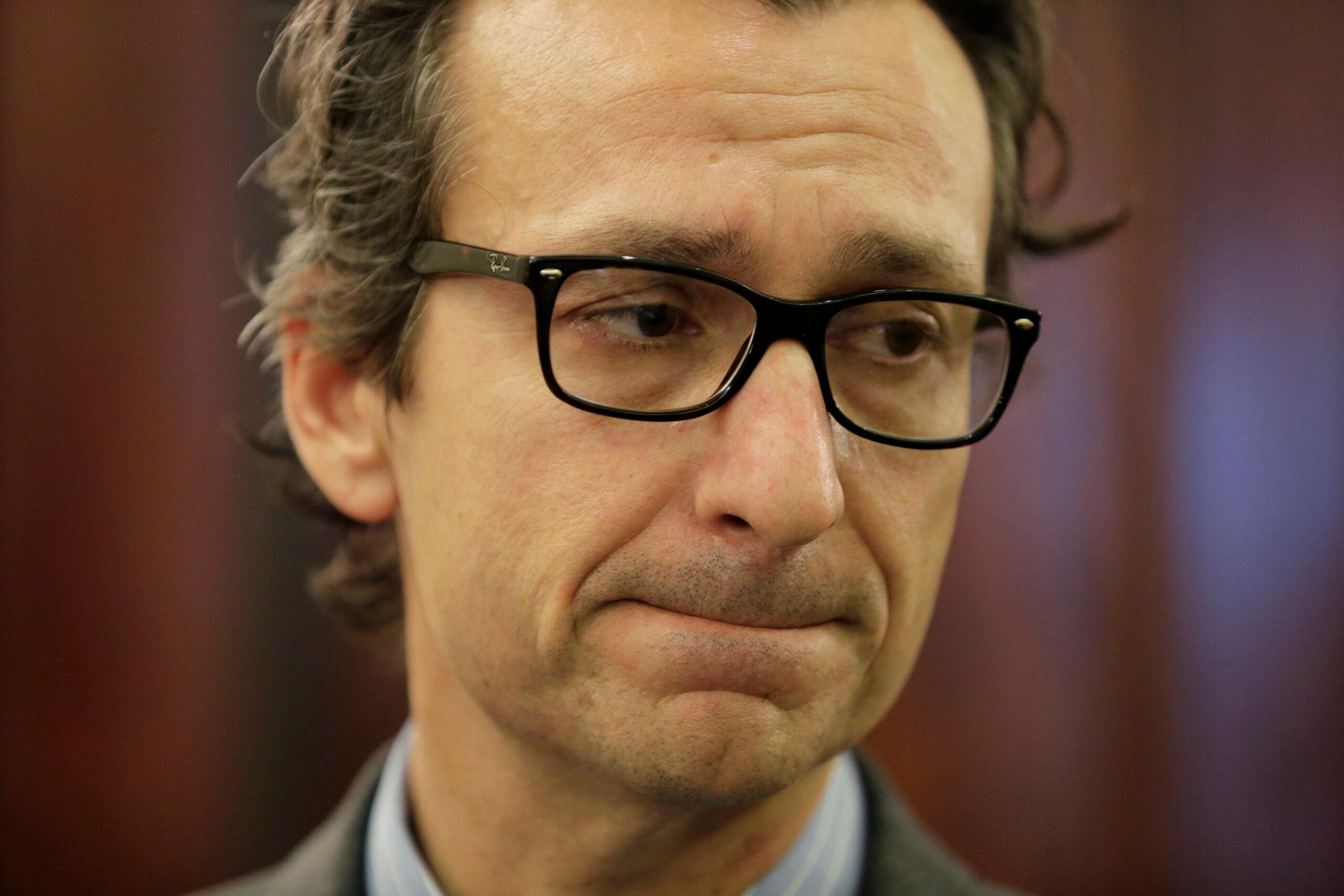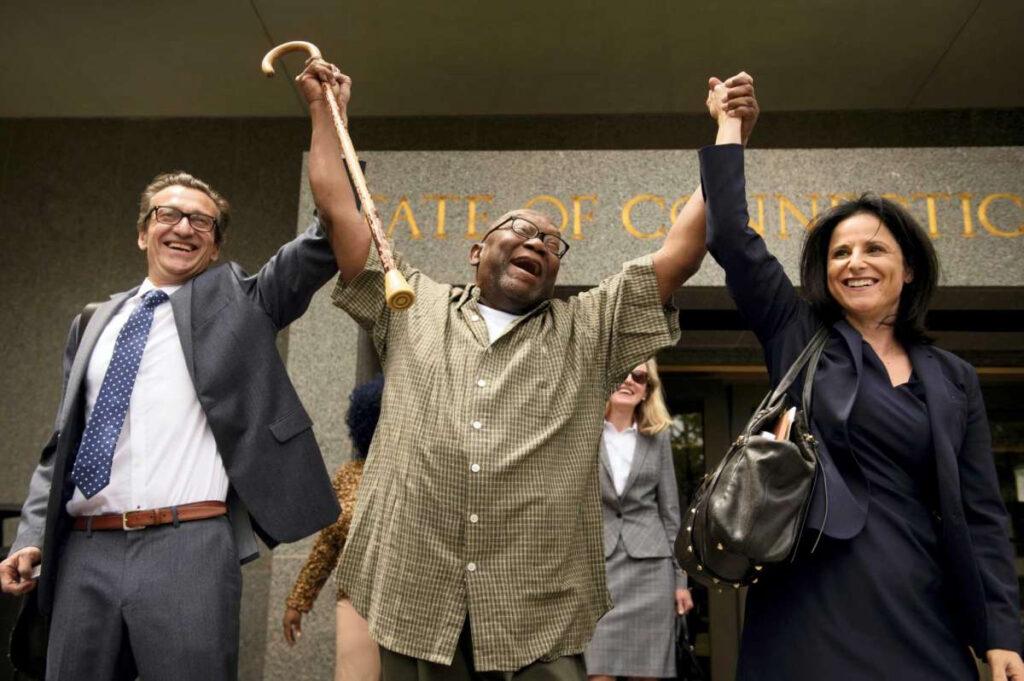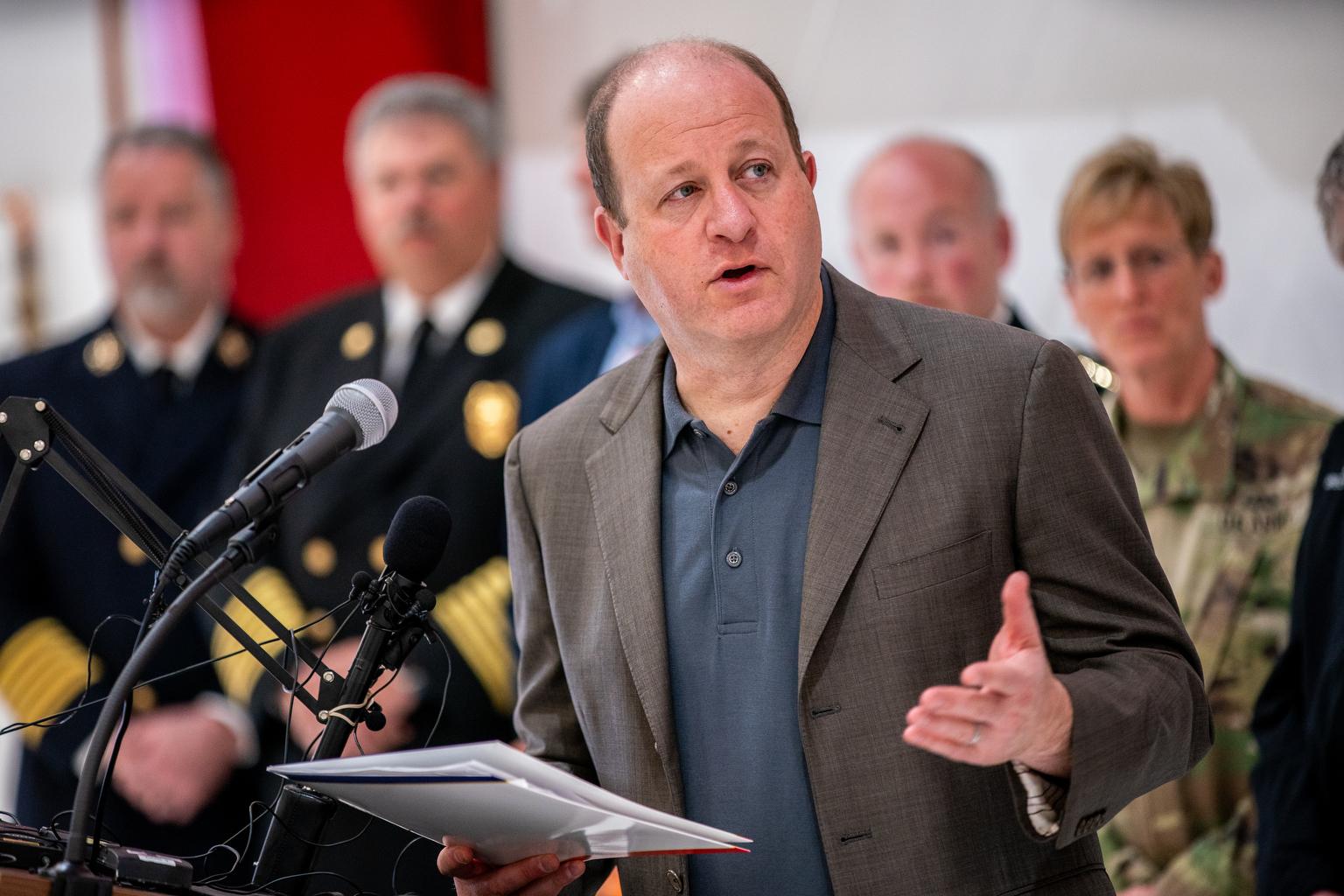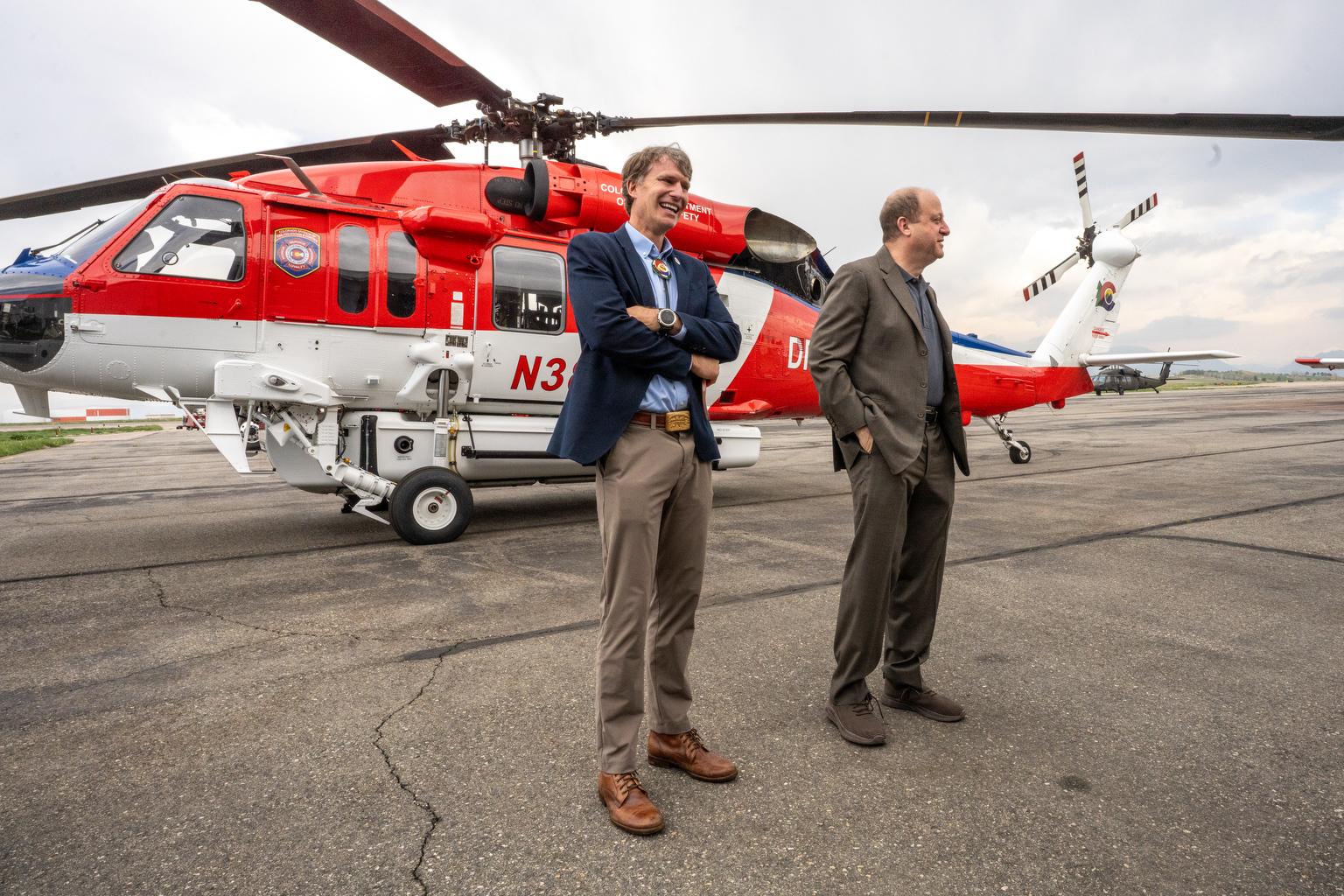
One of the most notorious criminal cases in the history of Grand Junction may return to court for a new trial.
James Genrich was sentenced to life in prison for a string of bombings that killed two people in the early 1990s. A key piece of evidence used at trial involved expert witness testimony that claimed marks on the bombs were made with a tool owned by Genrich, to the exclusion of all other wire cutters.
A group of attorneys from the Innocence Project, a nonprofit that seeks to overturn wrongful convictions, appealed on behalf of Genrich. They claimed the tool mark analysis amounted to junk science, and that new reports on forensic evidence were enough to warrant a new trial. In July, 21st Judicial District Judge Richard Gurly agreed, ordering a new trial.
“The newly discovered evidence not only impeaches that testimony but demonstrates that the testimony of the expert was unreliable because there are no scientific principles underlying or supporting Agent (John) O’Neil’s opinions that would render such testimony reliable and thus admissible,” the ruling said.
The District Attorney’s Office has appealed that ruling, sending the matter to the Colorado Court of Appeals. District Attorney Dan Rubinstein is withholding comment until the appeals brief is finalized, but did say they believe the original evidence of the case is strong.
Chris Fabricant, one of the attorneys working on Genrich’s team, is the head of strategic litigation for the Innocence Project. He’s written a book on faulty forensic evidence called "Junk Science and the American Criminal Justice System." He said the tool mark analysis used to convict Genrich should be considered junk science along with other discredited forensics.
He spoke to Ryan Warner about his book and the Genrich case.
Read the interview
This interview has been edited for length and clarity.
Ryan Warner: James Genrich is currently serving a life sentence. First off, how did the Innocence Project take up his case?
Chris Fabricant: We learned about Mr. Genrich’s case when we were examining convictions that rested on fundamentally unreliable forensic sciences. And my department here at the Innocence Project, strategic litigation, litigates against the admissibility of techniques that have led to wrongful convictions, techniques that haven't been subjected to scientific scrutiny by mainstream scientists. And we were looking at tool mark convictions and Mr. Genrich’s case rose to the top because it rose and fell on really what amounted to 1/100th of an inch mark on a two-millimeter piece of wire on a detonated bomb that forensic experts at trial claimed only Mr. Genrich’s tool — a pair of knockoff wire cutters that were made in China — among all other wire cutters in the history of time, could have made this particular mark on this particular wire.
And that's the only physical evidence connecting Mr. Genrich to the string of bombings. And, in fact, in one of the bombs that he was originally charged with — the 1989 bomb that did not detonate — the same expert witness matched one of Mr. Genrich’s tools to that bomb as well. But it turned out that Mr. Genrich had an airtight alibi. He was in Arizona at the time working in a bookstore, and there are employment records to demonstrate that. So that, too, demonstrates this was a subjective opinion that was deeply biased and unreliable and no conviction should rest on fundamentally unreliable science.
Okay, so why is (the tool mark analysis) unreliable, unscientific in your view?
There are a number of different reasons. Forensics generally, and this is true with many other fields of forensic sciences, do not take measurements. Almost all mainstream science, including social science, take measurements of some sort. But the evidence in this case — and this is true with footprints and it's true with other forms of ballistic evidence, and it's true with tire treads and it's true with fingerprints — there are no measurements taken. These are just eyeballed.

Warner:Tell me what you mean by not taking measurements because Chris, I think of fingerprints as a pretty exact science these days.
Well, the problem with not taking measurements is that if you're looking at a latent fingerprint, for example, or a tool mark left on a detonated bomb, and you're trying to determine whether or not a finger or a tool matches that, what you're not doing is saying that, ‘okay, well this is one millimeter wide and this tool is one millimeter wide and it's a certain depth and we know that this tool can reach this particular depth.’
Nothing like that is done. It's just looking under a microscope and making a judgment. So when you're not taking measurements and you're not having an objective basis to declare a match, then what you have is subjective speculation that is just eyeballing these two marks. And more often than not, these examiners are totally aware of the prosecution theory. And, like in Mr. Genrich’s case, there was massive pressure to solve this crime because it had been a terrifying string of incidents in Grand Junction and people had died. Then that examiner is under conscious and unconscious pressure to make the match.
What specifically are you contesting in this Grand Junction case?
What we're saying is that there is new evidence of the mainstream scientific consensus that rejects as unreliable and untested the so-called scientific evidence that was used to convict Jimmy Genrich at trial. Today we understand that these claims are not supportable and that therefore there's been a due process violation and that Mr. Genrich was given a fundamentally unfair trial. And there is really essentially no other evidence connecting Mr. Genrich to these crimes.
The new evidence here is really a deeper scientific understanding and some important reports that have come out about junk science. Is that right, Chris?
Yes. The forensic sciences in the United States have been virtually unanimously accepted in criminal courts as valid and reliable scientific evidence in the post-World War II era. And if you think about the way that forensics are depicted in television as infallible and conclusive and objective, those are the same way that courts have interpreted and accepted these forensic techniques. And it really wasn't until the advent of forensic DNA analysis — which demonstrated after it was used to overturn wrongful convictions that it was shown that forensic sciences had played a part in at least half of all known wrongful convictions, which was astonishing really to everybody. And it put the lie to the claim that forensic sciences were infallible.
After the Innocence Project had overturned all these convictions, Congress took notice and in 2006 mandated the National Academy of Sciences, which is the most prestigious scientific organization in our country, to study forensic sciences. And so they studied 13 of the most commonly used forensic techniques in American criminal courts. And it's a lengthy report that was issued.
And this includes toolmark analysis?
Yes, and it's one of the fundamental takeaways. There were no forensic techniques — zero — that were capable of identifying the source of crime scene evidence apart from nuclear DNA, not mixture interpretation, only nuclear DNA was possible to make source identification. So this was the thunderbolt that went through the forensic community because that's exactly the type of testimony that convicted Jimmy Genrich and many, many, many other people.
In the case of Mr. Genrich, the district attorney Dan Rubinstein says his office is appealing the decision for a new trial and the DA is holding off on commenting about the case until that brief is filed. But he says he believes that the evidence in the case is strong. Do you have to believe that Mr. Genrich is innocent to do this kind of work, or do you simply have to believe that the science on which he was convicted is not reliable?
Well, I believe that Mr. Genrich is innocent, so I'll be clear about that. We don't take cases where we believe that our clients are guilty.
Let's talk about disproportionality. Are there some types of suspects who are more likely to be subjected to this sort of evidence in court?
A theme that I explore in my book is called Poor People Science. And the reason that I've used a somewhat derogatory term is that I contrasted the use of scientific evidence in the criminal justice system as to that that's used in our civil liability system. And there's a major Supreme Court decision that was supposed to change the way courts admit or exclude so-called scientific evidence. And it did radically alter the way such evidence is used to make decisions regarding money. But decisions regarding life and liberty change not at all. Courts continue to admit evidence that is known to lead to wrongful conviction again and again and again. And so it disproportionately affects poor people and disproportionately people of color.
I mean, this is fascinating, right? Because in a way, medicine and science look forward at new developments and the law is about what has already been established. If the science then evolves past that, what you're saying is that the legal system is not as nimble at keeping up with that sort of science.
Precisely, right, exactly. Science is a process always moving forward, right? And so when hypotheses are falsified, they're discarded. When we have new data, we update our previously held beliefs or our understandings with the new data to adjust to our new reality. And the law doesn't do that. There's this fundamental tension that law tends to be much more static and science is in a process moving forward. And that was really what was at issue at the hearing in Mr. Genrich’s case. What happened was that scientific reality overruled legal precedent, which was appropriate and accurate because what we understand today about the so-called science that was used to convict Mr. Genrich is completely different and totally at odds with the law up until that point.
Have you met with Mr. Genrich at the correctional facility in Southern Colorado?
Sure. I meet with all of my clients, many times. I spend a lot of time on the road since I'm here in New York City, but yeah, I travel and I've been in prisons in I think probably all 50 states.
Is there anything about those interactions with him that you'd care to share?
He's a sweet, gentle soul who's had, I think virtually no infractions while he's been in prison. He enjoys playing Xbox. He's very sophisticated about his case and the law, and he's been very, very patient with the glacial pace of his case. And Mr. Genrich calls me on my cell phone periodically. When I see a Colorado number pop up on my cell phone, I know it's him. So my kids are aware that Mr. Genrich is calling in because he's been a priority case for a long time.
Maria Delores Gonzales and Henry Ruble died in these 1991 bombings. Does the Innocence Project do any sort of footwork with families when it works to reopen a case?
Yes, is the short answer. And when there's going to be a potential exoneration, we always try to work with the prosecutors too because families like that are often re-traumatized because they've spent however many years believing that the actual perpetrator had been duly convicted and was serving their sentences. The criminal justice system brings a lot of pain and suffering, and we do our best to mitigate that as much as possible. There are important victim rights advocates that can play a role here, too.
We've to this point, largely focused on tool mark analysis, but bite mark analysis gets a lot of attention in your book, A field that seems to have invented its own credibility, how?
When we started using forensics in casework, and this is true with both civil and criminal cases, is that you had this explosion of the expert witness industry that mushroomed overnight really to meet the demand. You had professional organizations that were invented by kind of interested parties, the dentists in this case being one of them, and they would create their own board-certifying entities. Bite marks is a great example. What they did was there was a group of 12 dentists — and I was actually able to track down the original documents and the original meetings and the minutes from those and recreate these scenes — where there was an interest by what they called themselves, forensic odontologists, on getting in on what was rapidly evolving field and becoming a big deal in the media, too. But forensic odontologists are involved in forensics to a degree, because I'm sure your listeners would be familiar with stories of bodies that are burned beyond recognition and they have to be identified by their dental records.
Or I think of that with plane crashes.
Right. And so few people really know who it is that makes those identifications, and those are forensic odontologists, but they were not getting in court. They weren't like these forensic sleuths. They weren't Quincy, they weren't the new FBI crime lab G Men that were lionized in the media. They were just working down at the medical examiner's office and were not getting paid as expert witnesses and weren't involved in crime solving and the rest.
What they did is they started pointing to bite marks as another, what they were calling a sub-discipline other field. Like a lot of junk science, it made a certain amount of intuitive sense. I was actually able to find the original bite mark case. In that case the judge acknowledges on the record that there had been no scientific experimentation in the field and doubted that there would really be any. But he said, ‘well, this isn't such confusing stuff. It's not like black box technology or something. So I'm going to admit it.’ That case became the terminal case across the country.
So I gather there were many convictions on the untested science of bite mark analysis.
Oh my gosh, yes. I've been involved in nine exonerations of people that were convicted wrongfully on bite mark evidence. And if you zoom out a little and you think about it, we have 2.3 million people in various forms of incarceration in this country, which is an astonishing number in and of itself. And if you think that perhaps 1 percent of people have been wrongfully convicted — and I think that's a conservative number — you're talking about tens of thousands of people, and one of the ways to identify who those people might be are folks whose convictions rest on what mainstream science tells us is unreliable evidence.
I want to invoke Curtis McCarty, who spent 19 years on death row before being exonerated. Faulty hair analysis was used in the evidence against him. As hooded guards escorted people to their deaths, a tradition was for other inmates to bang their shoes on the floor. And Curtis — as an innocent man, as a now exonerated man — had previously banged his shoes 11 times. He watched almost a dozen people being walked to their execution.
Isn't that a chilling account?
Yes. And it makes me wonder in the context of wrongful conviction, in the context of what you are calling junk science, what does that do to the person who may be wrongfully convicted?
I can't even imagine, particularly being on death row as an innocent person or even as a guilty person, but certainly as an innocent person. Curtis was never the same after these experiences. And he believed that many of the people, at least two of the people that he had seen literally dragged away by hooded guards, were innocent. Something I point out in the book, is that the prosecutor who put him on death row, and at least 50 other people has had, I think the number was 12 convictions overturned in that time.
What is a good example, Chris, historically of something that was widely believed to be sound forensics that now seems like poppycock?
You think about bite marks, hair microscopy, polygraphs, blood spatter, old arson investigation techniques, handwriting evidence, phrenology, future dangerousness, hypnosis. Those are the ones that leap to mind that are used all the time in the criminal legal system that have no basis in science, criminal profiling is also junk science.
Is it dangerous to dismiss an entire approach as junk science when maybe what it is is evolving? I mean, hasn't some of this stuff gotten better over time as we would expect it to?
Well, you would expect it to, yes. And we can only do as well as the contemporary scientific consensus mandates. And so we should, at the very least, be doing and adopting our law and our views based on what scientists are telling us the literature supports. There's always room for some debate on these. And the idea of it being dangerous to call something junk science, I think the opposite is true, is not calling it junk science when it is. What I think is really fundamentally important to understand, is that there's nothing that I label in my book or during this interview as junk science that could be done reliably. Let's go back to fingerprints for a minute, which is generally a reliable field, but you can make it pretty junky if you don't have sufficient information.
So fingerprints that are latent, fingerprints are smudges at crime scenes? These aren't the deliberately rolled prints that you see that we used to unlock our iPhones with or anything like that. And what we don't know is how much information you need to make a quote match, right? So there's no objective threshold, no measurement taken, saying that we need 10 to 15 minutiae — or those are the little lines that make up a fingerprint to match the suspect. So that's just a subjective judgment that's being made there. And when — we don't have, as a scientifically validated fact, that fingerprints are unique. I mean, I think they probably are, but we don't know that as a matter of fact.
Amazing. That's amazing, right? Because you just hear that. You hear that as quickly as you hear that all snowflakes are different.
I think that they probably are, but we don't know that. More important is that we don't know how similar two fingerprints can be. When you're talking about a smudge at a crime scene, you have a small amount of information, then you have the possibility for miscarriages of justice, and you layer on top of that the biasing information that we talked about earlier.
You can see how an otherwise reliable field like fingerprints can be made very unreliable. And you say, what should we be labeling things? I mean, as far as junk science or not junk science, one of the really frustrating aspects of my work is that we know how much prosecution theories influence forensic experts’ conclusions. And there is still no effort to shield those experts from irrelevant information into what they're actually being asked to say, right? Does this thing match this other thing? That's it, right? You don't need to know anything else about the case, and no measures are taken to mitigate the exposure of that type of information. That becomes really just a useful prosecution tool and not real science.









